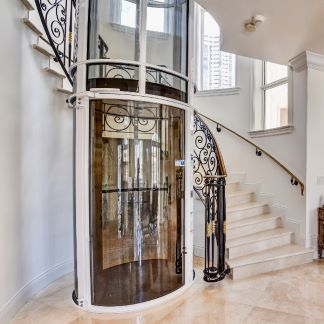When it comes to enhancing your home’s comfort and style, few features offer as much elegance and practicality as a home elevator. In today’s market, homeowners have a range of options, including models designed specifically for quiet operation.
Quiet home elevators are ideal for those who value a peaceful living environment and want to minimize disruptions.
In this blog, we’ll explore the nuances of quiet home elevators and compare them with pneumatic home elevators.
Pneumatic elevators, with their cutting-edge technology, offer a unique combination of sleek design and silent operation.
- For a comprehensive overview of different types, including pneumatic models, check out: Types of Home Elevators
We’ll dive into how these two types of systems stack up against each other, focusing on their noise levels, benefits, and the overall living experience they provide.
Whether you’re looking to upgrade your current residence or planning a new build, understanding the differences between these models will help you make an informed decision that enhances both your home’s functionality and tranquility.
Table of Contents
- What Defines a Quiet Home Elevator?
- Key Features of Quiet Home Elevators:
- Pneumatic Home Elevators: A Quiet and Innovative Choice
- Comparing Noise Levels: Pneumatic vs. Other Quiet Elevators
- Finding the Perfect Elevator for Your Quiet Home?
- So, What’s the Best Choice?
- Conclusion
- FAQs
- Q1: Are pneumatic home elevators as quiet as the traditional ones?
- Q2: What are the maintenance requirements for a quiet versus a pneumatic elevator?
- Q3: Can a pneumatic home elevator be installed in an existing home?
- Q4: What makes a pneumatic system a good choice for those prioritizing quiet operation?
What Defines a Quiet Home Elevator?
A quiet home elevator is specifically designed to operate with minimal noise, creating a serene environment within your living space. But what exactly qualifies an elevator as “quiet”?
To know that let’s delve into the features that set these elevators apart and make them a desirable choice for homeowners seeking tranquility.
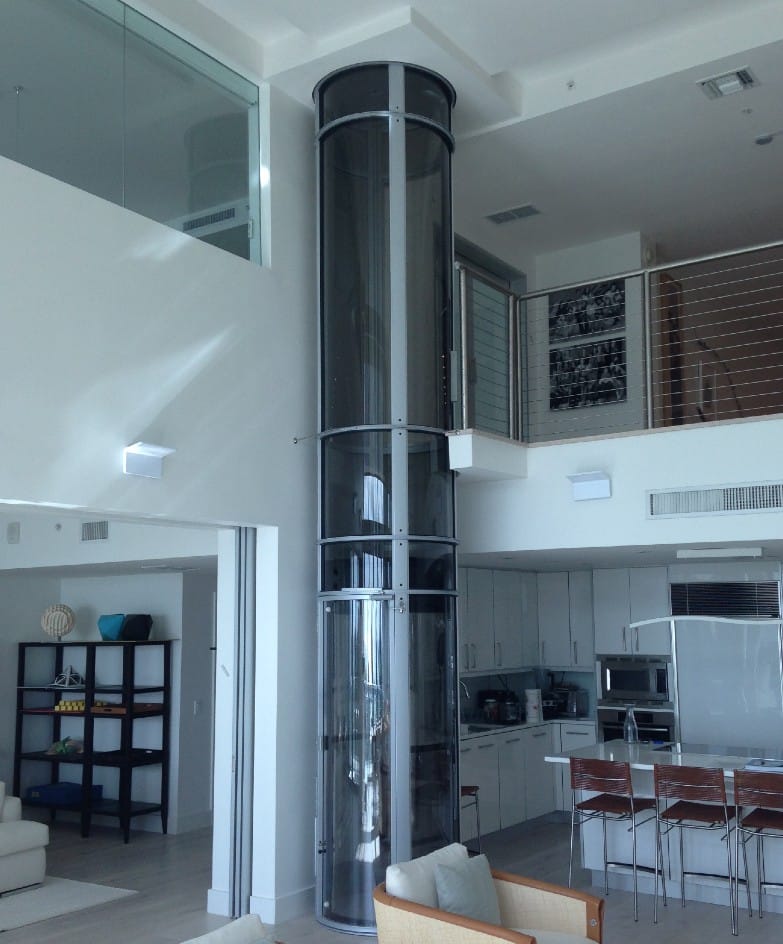
Key Features of Quiet Home Elevators:
1. Noise-Reducing Technology:
These types of lifts often incorporate advanced noise-reducing technology to ensure smooth and silent operation. This can include specialized insulation materials, sound-dampening motor enclosures, and advanced mechanical components designed to minimize vibrations and operational sounds.
2. Smooth Operation:
The hallmark of a quiet home elevator is its smooth operation. They feature high-quality, precision-engineered parts that experience less friction and wear, leading to quieter performance.
Smooth movement also reduces the audible noise generated during the elevator’s travel, ensuring a peaceful ride from floor to floor.
3. Energy Efficiency:
Many quiet home elevators are designed with energy efficiency in mind. By using energy-efficient motors and systems, they not only reduce operational costs but also contribute to a quieter performance.
Lower energy consumption often translates to less mechanical noise, enhancing the overall quiet experience.
4. Advanced Drive Systems:
Elevators equipped with advanced drive systems, such as traction drives or hydraulic drives, are often quieter than those with older or less sophisticated mechanisms. These modern systems are designed to minimize noise while providing reliable and efficient service.
5. High-Quality Construction Materials:
The materials used during the construction of these lifts also play a crucial role in noise reduction.
High-quality, vibration-absorbing materials and carefully engineered components help ensure that the elevator operates as quietly as possible, contributing to a more enjoyable and peaceful home environment.
By focusing on these features, quiet residential elevators offer a solution for those who prioritize a tranquil living space without sacrificing functionality or style.

4 Models To Choose From
Are you looking for an in-home elevator? Simply pick your favorite below to learn more.
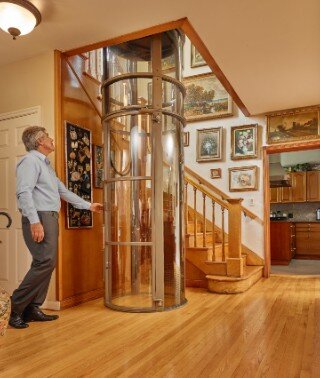
PVE30 - Home Elevator
Single Passenger Residential Elevator
Space-Saving Solution
Exterior Diameter
30 Inches
(750 millimeters)
Maximum Weight
350 Pounds
Rated: 1 Person
Per Use
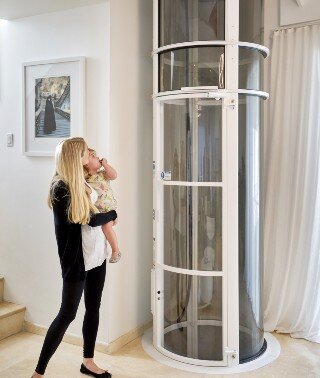
PVE37 - Home Elevator
Two Passenger Residential Elevator
Flexible & Dynamic Lift
Exterior Diameter
37 Inches
(933 millimeters)
Maximum Weight
450 Pounds
Rated: 2 People
Per Use
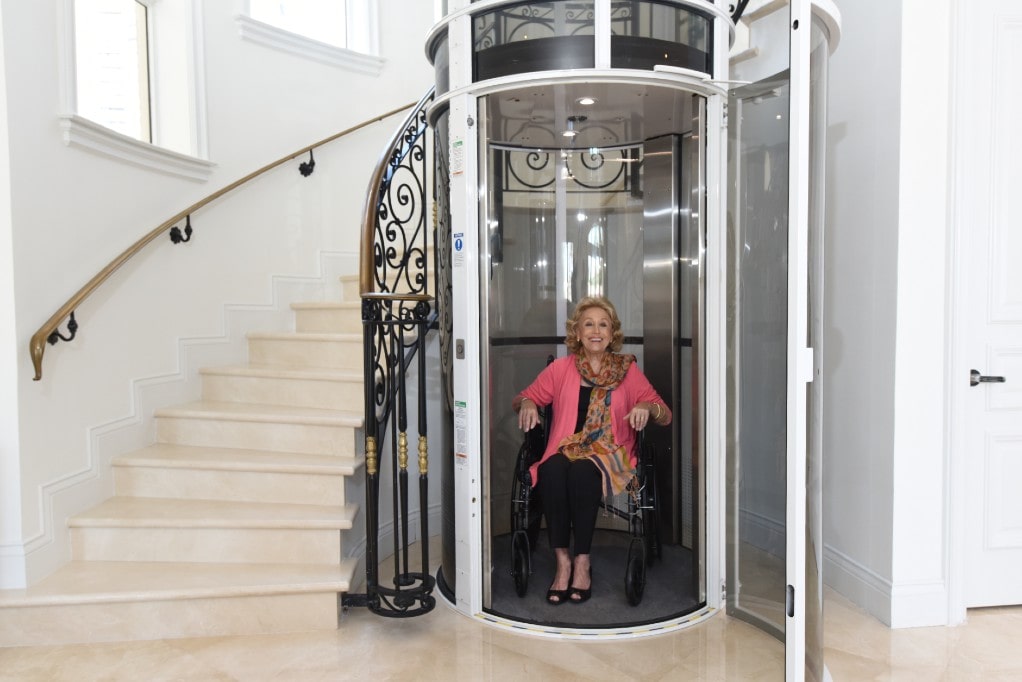
PVE52 - Home Elevator
Three Passenger Residential Elevator
Wheelchair Accessible Lift
Exterior Diameter
52 - 11/16 Inches
(1,316 millimeters)
Maximum Weight
525 Pounds
Rated: 3 People
Per Use
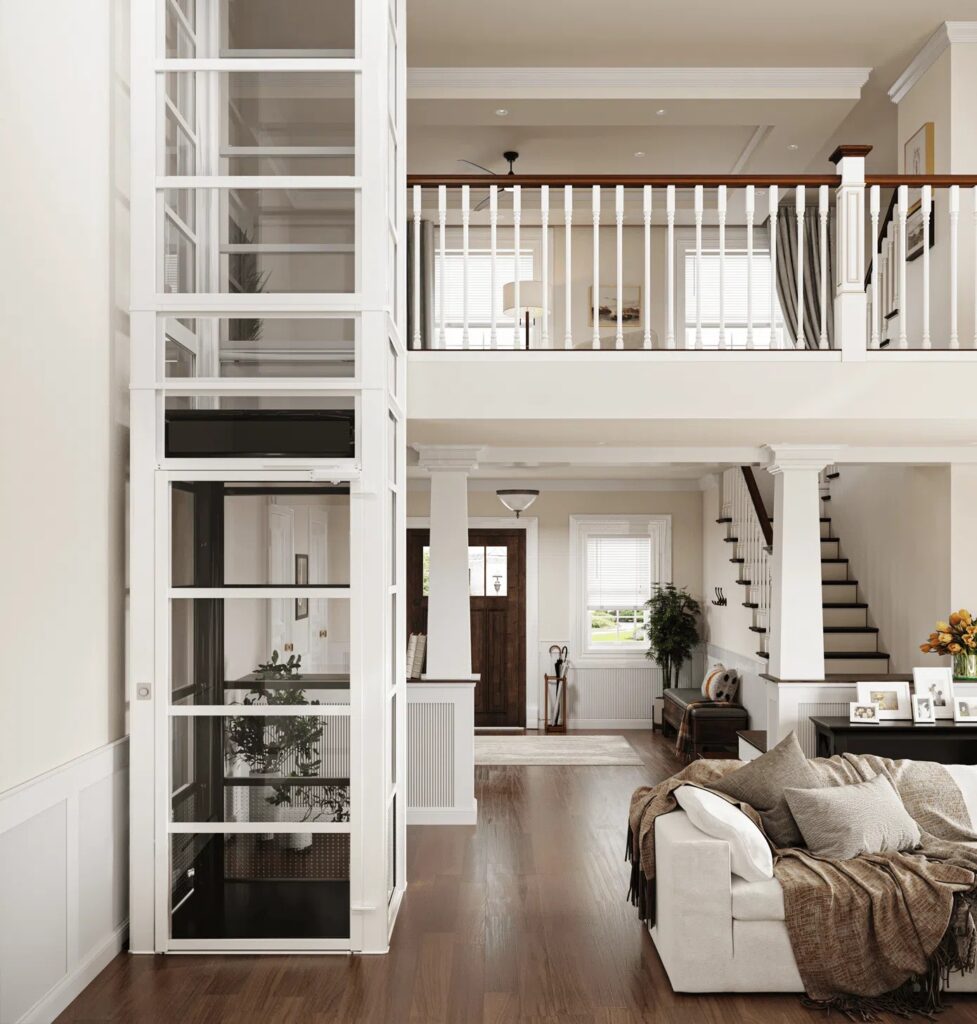
The Cube - Home Lift
Two Passenger Residential Elevator
Affordable Alternative To Stairs
Exterior Diameter
52 - 11/16 Inches
(1,316 millimeters)
Maximum Weight
450 Pounds
Rated: 2 People
Per Use
Pneumatic Home Elevators: A Quiet and Innovative Choice
If you’re considering a home elevator and value a serene environment, understanding how pneumatic lifts work and how they compare to other quiet lift options can help you make an informed choice.
What Makes Pneumatic Elevators Unique?
A thing that makes them different is that they utilize a cutting-edge air-powered system that sets them apart from traditional residential elevator technologies.
Instead of relying on cables, pulleys, or hydraulic fluids, these operate using a system of air pressure. This method involves using a vacuum or air pressure to move the elevator smoothly between floors. This technology results in a more streamlined and efficient system.
To learn more about the innovative technology take a look at this page Pneumatic Elevator – Innovative Home Elevators (cluster page link)
How Pneumatic Elevators Achieve Quiet Operation?
One of the standout features of this system is its ability to operate quietly. Here’s why:
1. Air-Powered System:
The core of a pneumatic elevator’s quiet performance lies in its air-powered mechanism. Unlike the traditional ones that involve heavy motors and complex machinery, these use air pressure to create a smooth ride.
This system reduces the mechanical noise typically associated with lifts.
2. Minimal Moving Parts:
These lifts have fewer moving parts compared to traditional systems. This reduced complexity minimizes friction and wear, which can contribute to noise.
Fewer parts also mean less chance of mechanical issues that could cause unwanted sounds.
3. Smooth and Silent Travel:
The air-powered mechanism ensures a gentle and smooth movement of the elevator. The absence of noisy gears and cables results in a quieter operation, making them an excellent choice for those who prioritize a tranquil home environment.

Comparing Noise Levels: Pneumatic vs. Other Quiet Elevators
When comparing the pneumatic ones to other quiet home elevator models, such as those with advanced noise-reducing technologies, pneumatic systems often hold their own.
While traditional quiet lifts may use advanced insulation and sound-dampening materials, the inherent design of pneumatic —leveraging air pressure rather than mechanical systems—often results in a comparable or even superior quiet experience.
1. Traditional Quiet Elevators:
These may include features like noise-reducing technology and smooth operation to limit sound. However, they still rely on mechanical systems that, despite improvements, can produce some noise.
2. Pneumatic Elevators:
These models benefit you from their innovative air-powered design, which inherently reduces noise. Their smooth, vibration-free operation often results in a quieter performance compared to traditional ones, even those specifically designed to be quiet.
Finding the Perfect Elevator for Your Quiet Home?
When selecting the right lift for a peaceful home, it’s essential to weigh various factors to ensure you make the best choice for your needs.
Here’s a straightforward guide to help you decide:
1. Installation and Space Requirements:
Consider the space you have available and how each type of system fits into your home. Pneumatics, with their compact design, often require less pre-construction work, making them ideal for homes with limited space or where minimal disruption is preferred.
2. Cost Considerations:
While initial costs are important, think about long-term expenses as well. Pneumatic lifts might have a higher upfront price, but their low maintenance needs can offset this over time. Traditional quiet lifts might offer a lower initial cost but could involve higher maintenance and operational costs.
3. Maintenance and Reliability:
Maintenance is a key factor in ensuring your elevator remains hassle-free. Pneumatics are known for their low maintenance needs due to their simple air-powered system. On the other hand, a traditional one might require more frequent upkeep, which can be a consideration if you’re looking for a more hands-off solution.
4. Personal Preferences and Aesthetics:
Think about what appeals to you most. Pneumatics combine modern design with quiet operation, making them a stylish choice that blends seamlessly with contemporary home interiors. Traditional quiet models may offer various design options but might not match the sleek look of pneumatic models.
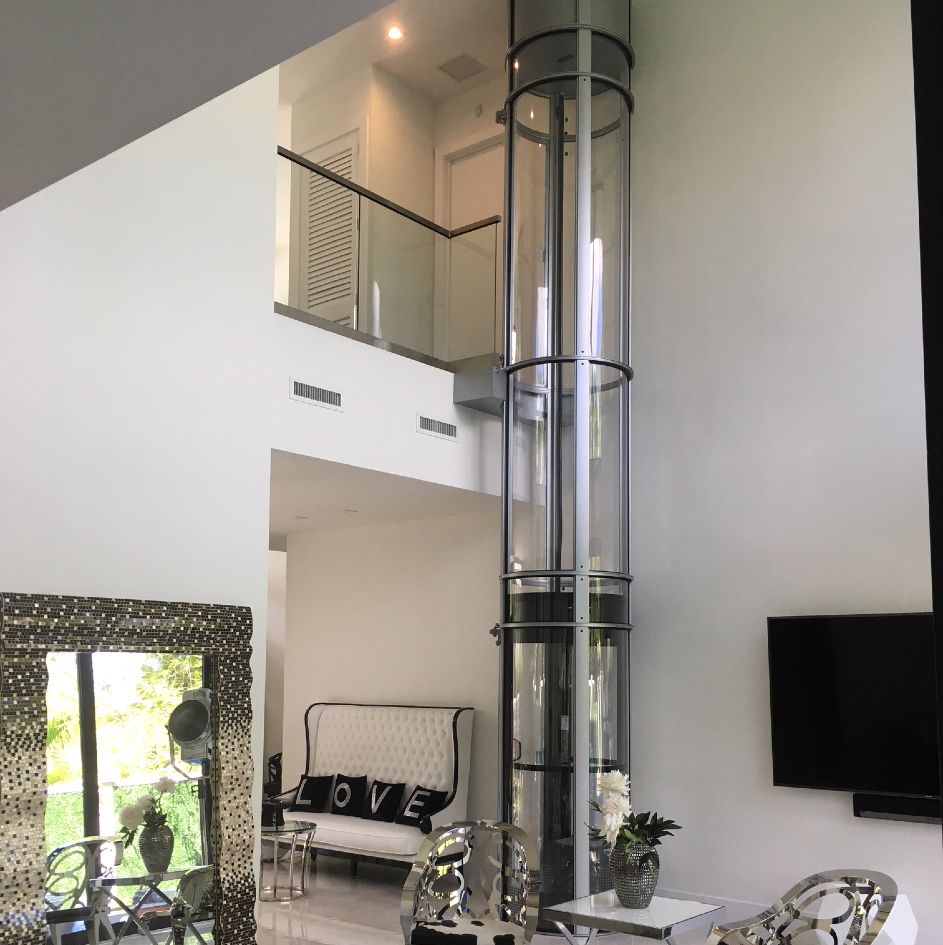
So, What’s the Best Choice?
Ultimately, the best choice for your home depends on what matters most to you. If you’re seeking a quiet, stylish, and low-maintenance solution, pneumatic stand out with their unique air-powered design. They offer a natural quietness and modern elegance that can enhance any home.
For a top option that perfectly blends peaceful operation and cutting-edge design, consider the PVE 30. This pneumatic model from PVE Home Elevator offers a sleek and silent experience that fits seamlessly into any home.
Conclusion
To sum up, when it comes to choosing a home elevator that combines quiet operation and sleek design, pneumatic systems offer some compelling advantages. Their air-powered technology not only provides a smoother, quieter ride but also simplifies maintenance compared to traditional quiet models. If you’re looking for an elegant and hassle-free addition to your home, pneumatics stand out with their modern aesthetic and reliable performance.
Ready to elevate your home with style and serenity? Contact PVE Home Elevator today to explore more about our pneumatic models or to request a quote. Let us help you transform your living space with the perfect blend of peace and sophistication.
FAQs
Q1: Are pneumatic home elevators as quiet as the traditional ones?
Pneumatics are designed to be inherently quiet thanks to their air-powered system, which minimizes noise during operation. While traditional quiet lifts also aim to reduce noise through various technologies, pneumatic lifts often offer a more naturally silent experience. So, if quiet operation is a priority, pneumatics are a great choice.
Q2: What are the maintenance requirements for a quiet versus a pneumatic elevator?
When it comes to maintenance, the air-powered generally requires less upkeep. Their simple vacuum system means fewer moving parts and less wear and tear. Traditional lifts might involve more frequent maintenance due to their complex mechanical components.
Q3: Can a pneumatic home elevator be installed in an existing home?
Yes, they can be installed in existing homes. They have a compact design and don’t require extensive modifications to your home’s structure. This makes them a practical choice for retrofitting into existing spaces without major renovations.
Q4: What makes a pneumatic system a good choice for those prioritizing quiet operation?
They use air pressure to move between floors, which inherently reduces noise compared to other types. Their design eliminates many of the noisy mechanical components found in the traditional systems. For those who value a quiet and peaceful home, pneumatics offer a seamless blend of modern technology and silent operation.



